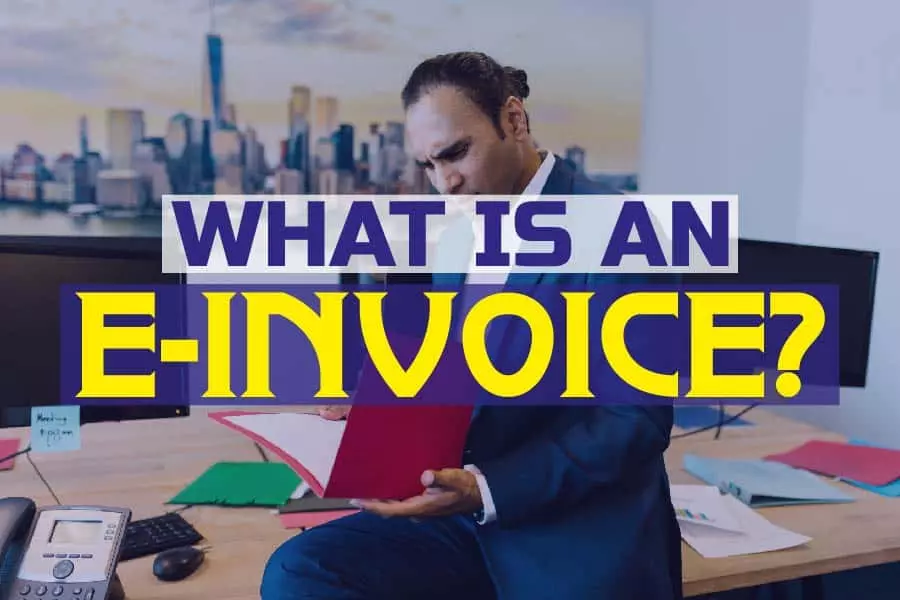Electronic invoicing is utilized across the world each day. The benefits of electronic invoicing outnumber its disadvantages. E-invoice or digital invoice is not a new concept. However, many people are still confused by it and have questions while comparing commonly used invoice types and electronic ones. An e-invoice still has all features and functions that have physical invoices but is issued, received, transmitted, and stored electronically. The entire life cycle of an electronic invoice is digital from issuance to archiving. The data of such entirely electronic invoicing from suppliers are integrated into the buyer’s system.
What Is Not An E-Invoice?
Two types of an invoice cannot be considered electronic ones. These are paper and PDF invoices. Paper invoices can be easily converted to digital format. However, they will not be considered electronic if they are not issued electronically. PDF invoices are not sent in a structured format and are typically sent via email. Therefore, they cannot be processed automatically. They are considered not true invoices since they need additional data re-entry. It is in turn they are time-consuming and error-prone. If you want to know more keep reading to find out the outstanding benefits of digital invoicing for your business.
Advantages Of E-Invoicing For Suppliers
- Improved cash flow and faster payment. Electronic invoices save tons of buyers’ time. Such time-consuming steps like re-key, sorting, routing, and further invoice submitting, and even lost invoices are not the subject of concern anymore. Additionally, electronic invoices are accessible on the buyer’s account if a buyer uses an invoice generator. Such invoices are approved and routed faster which in turn result in on-time payments and improved cash flow.
- Better account reconciliation. Electronic invoicing almost eliminates challenges related to receipt of single payments that combine multiple invoices. Such payments commonly have one problem when they are different from the original invoices. The reasons are various. Often it happens when customers claim deductions for damaged goods. For example, a supplier can issue 5 invoices of $5000 each and receive a single payment of $24000. In this case, the supplier should contact the customer’s accounts payable department and get more information about the payment. E-invoicing helps customers with sending details on their invoices paid with the payments to help with reconciliation of the account.
- Reduced costs. Suppliers benefit from e-invoicing since it helps reduce costs associated with the delivery of paper invoices, their storage, printing, and processing. The increased accuracy of e-invoices leads to decreased number of calls in the customer services department.
- Fewer rejected invoices and disputes. Issues related to late payments, rejections, and disputes are time-consuming. E-invoicing makes things easier. Through electronic invoicing data related to the supplier’s AR system is easily transmitted to the customer’s AP system. This process decreases the risk of errors coming from data re-entry. Thus, the number of rejected invoices decreases.
- Improved customer satisfaction. Suppliers that use electronic invoicing benefit from its fewer payment issues and faster processing. Therefore, they can provide a higher level of services and get a higher rate of customer retention. This is especially good for businesses that provide online services, create e-commerce platforms, SaaS, and B2B businesses or for example companies that outsource web development services and many others.
Advantages Of E-Invoicing For Buyers
- Increased productivity and automation. When dealing with PDF or paper invoices the documents must be sorted, re-entered, and stored in the AP system. These steps are time-consuming, especially the re-entry process. Also, they are prone to error. Data from electronic invoicing is sent directly to the buyer’s AP system. This eliminated the necessity of manual data re-entry.
- Reduced costs. Buyers can greatly benefit from e-invoicing if it is equipped with a supplier’s portal. In this case, suppliers can monitor payments information, approval as well as track the status of invoices. This means that a supplier can see approved, received, and submitted payment invoices.
- Advantages of early payment discounts. Suppliers often ask for early payment. That is why they often offer a discount in exchange. This in turn gives buyers more discount opportunities.
- Improved supplier relationship. E-invoicing is an efficient payment method that strengthens a business relationship. Therefore, it guarantees improved customer satisfaction and will lead to a streamlined supply chain.
Final Thoughts
There is no need for paper while dealing with e-invoicing that eliminates carbon footprint. Additionally, there is no need for wasting energy on the production and transportation of required documents. On top of that suppliers and buyers mutually benefit from e-invoicing by facilitating automation, preventing losses, errors, and frauds, shortening payment cycles, enhancing compliances, and much more. Automation of invoice processing results in several strategic and operational benefits that get both-suppliers, buyers and managers as well. It is time to switch to e-invoicing and to have real-time insight into your financial status with the safest invoices ever made.
Similar Posts:
- Invoice Discounting Solutions: A Strategic Approach to Business Liquidity
- Omnichannel Payments for SaaS Success
- The Dawn of Web 3.0: Global Payment Solutions for a Borderless Future
- The 10 Best Payment Apps To Use
- How to Choose the Best Payment Method for Online Casino
- What is Demographic Data Enrichment? A Comprehensive Guide
- Real-Time Financial Data: Staying Ahead in a Rapidly Changing Market
- How To Cancel An eBay Order – eBay Know-How
- Can Aarons Call The Police On You? Check This Out
- How To Create A Roadmap In An Essay

